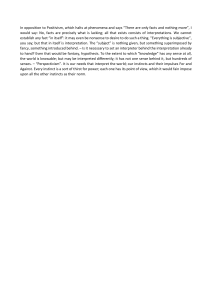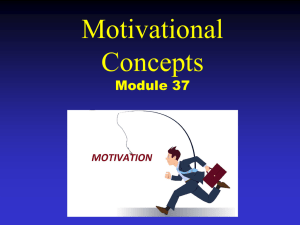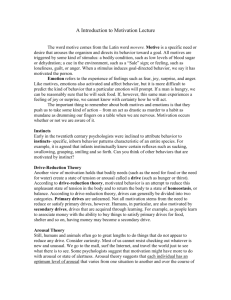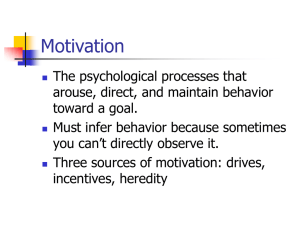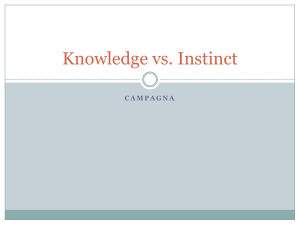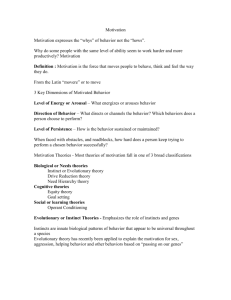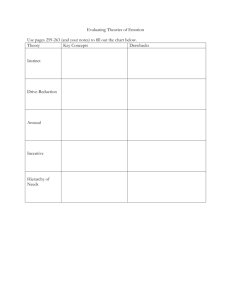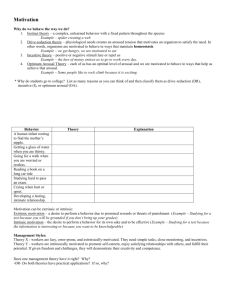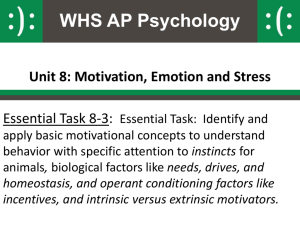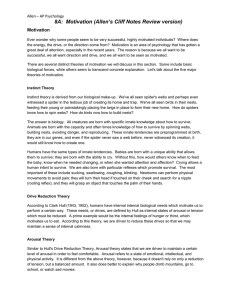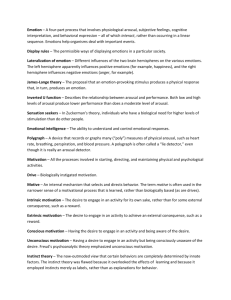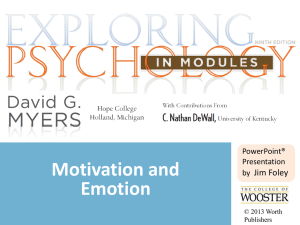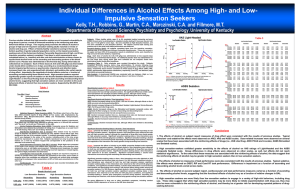Motivation and Emotion Motivation Biological Sources of Motivation
advertisement
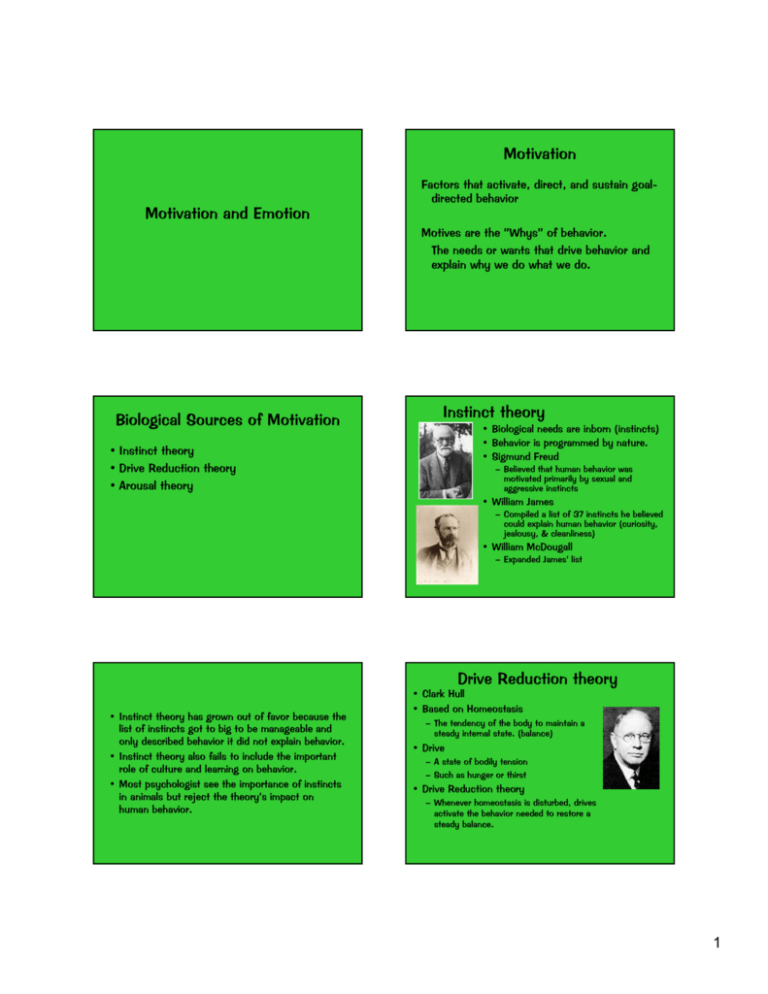
Motivation Motivation and Emotion Factors that activate, direct, and sustain goaldirected behavior Motives are the “Whys” of behavior. The needs or wants that drive behavior and explain why we do what we do. Biological Sources of Motivation Instinct theory • Biological needs are inborn (instincts) • Behavior is programmed by nature. • Sigmund Freud • Instinct theory • Drive Reduction theory • Arousal theory – Believed that human behavior was motivated primarily by sexual and aggressive instincts • William James – Compiled a list of 37 instincts he believed could explain human behavior (curiosity, jealousy, & cleanliness) • William McDougall – Expanded James’ list Drive Reduction theory • Instinct theory has grown out of favor because the list of instincts got to big to be manageable and only described behavior it did not explain behavior. • Instinct theory also fails to include the important role of culture and learning on behavior. • Most psychologist see the importance of instincts in animals but reject the theory’s impact on human behavior. • Clark Hull • Based on Homeostasis – The tendency of the body to maintain a steady internal state. (balance) • Drive – A state of bodily tension – Such as hunger or thirst • Drive Reduction theory – Whenever homeostasis is disturbed, drives activate the behavior needed to restore a steady balance. 1 Drive Reduction theory does include the role of learning • Primary Drives – Biological drives such as hunger or thirst – Inborn • Secondary Drives – Result from experience – Learned – Our drive to achieve monetary wealth Harry Harlow Contact Comfort Arousal Theory • Challenges the ideal that all drives satisfy basic survival needs • Babies manipulate objects – Shake rattles, turn knobs, push buttons even though none of these behaviors satisfy basic survival needs • Stimulus motives – Prod organisms to explore their environment and manipulate objects (esp. unusual or novel objects) does not go away as we age • Contact Comfort – Harry Harlow Arousal Theory • Whenever the level of stimulation dips below an organism’s optimal level, the organism seeks ways of increasing it. When stimulation exceeds an optimal level, the organism seeks ways to tone it down. • Optimal levels very from person to person – Some people need high levels of adventure and others do not. Sensation Seekers • Marvin Zuckerman (2004) calls people with high need for arousal (adventure) sensation seekers. • Sensation seekers tend to get bored easily and may have difficulty restraining their impulses. – May take undue risks – May develop problems with drugs or alcohol – May engage in illegal activities – Strong genetic component – Many sensation seekers limit themselves to sanctioned, reasonably safe activities • Surfers, sky divers, race car drivers etc… 2 Psychological Sources of Motivation Certain goals are desirable or rewarding even though attaining them are not biological needs Incentive Value • The strength of the “pull” that a goal or reward has on our behavior • Influenced by many factors – Individual learning experiences or expectations • We place more value on a goal if we have learned from past experience to associate it with pleasure or if we expect it will be rewarding when we obtain it. – Cultural influences • Some cultures place values on individual achievement and accumulation of wealth others place a premium on meeting obligations to one’s family, religion, employer, or community. Incentive theory • Our attraction to particular goals or objects motivates our behavior • Incentives are rewards or other stimuli that motivate us to act • Incentives motivate us by pulling us toward them. Psychosocial needs (Interpersonal Needs) • Need for affiliation – Need for social relationships – Those with a high need for affiliation (nAff) need harmonious relationships with other people and need to feel accepted by other people. They tend to conform to the norms of their work group. High nAff individuals prefer work that provides significant personal interaction. They perform well in customer service and client interaction situations. • Need for achievement – Strong need to excel at what we do – Hard-driving and ambitious – Take pride in accomplishing their goals Need for Achievement • David McClelland (1985) • Goals that people with high need for achievement set for themselves are challenging but realistic • Goals that are to easily achieved are not an interest for people with high achievement need. • High achievement need people may not always succeed by take failure in stride and keep pushing ahead. • People with low need for achievement are motivated by a desire to avoid failure. • Low achievement motivated people set goals either so low that anyone can achieve them ore so unrealistically high that no one can reach them. • When low achievement motivated people fail they quit. Extrinsic Motivation • Desire for external Intrinsic Motivation • Desire for internal gratification 3 Our need for achievement may pull in opposite directions • Achievement Motivation Maslow (1970) Hierarchy of Needs – The desire to achieve success leads us to take on challenges • Avoidance Motivation – The desire to avoid failure – They avoid taking chances that could result in failure. – Avoiding taking chances reduces the likelihood of success. 4
